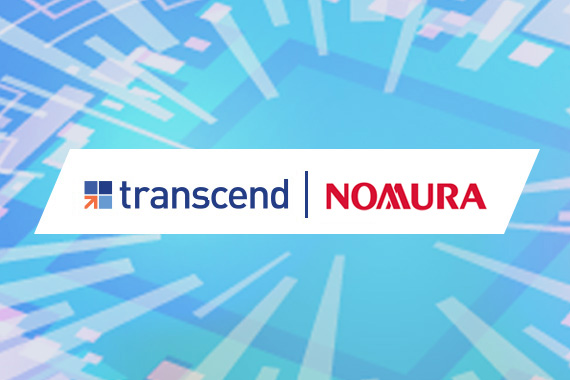The Emergence of Electronic Executions
In just the last five years, repo trading has seen a clear transition from voice executions to electronic executions, proven by the emergence and adoption of new dealer-to-client (D2C) e-trading platforms, such as Tradeweb, GLMX, BrokerTec Quote, and Bloomberg, along with new entrants in the P2P space. While the repo market is one of the last institutional markets to embrace electronic trading, there have been several industry factors contributing to the recent evolution including:
- Regulatory reporting mandates such as the Securities Financing Transactions Regulations (SFTR)
- Pre- and post-pandemic stimulus actions resulting in yield chasing efforts
- The current rising interest rate environment creating a new opportunity to invest excess cash
While instant access to liquidity and real-time execution are key benefits of e-trading, the utilization of electronic trading platforms is also the first step to achieving a ‘zero touch’ end-to-end repo workflow, from execution-to-settlement. This workflow objective is critical to achieving improved performance across multiple dimensions such as efficiency, cost savings, regulatory governance, and risk management.
The Post-Trade Evolution
Unlike the equity and fixed income markets where the trade workflow is typically defined by a set of key tasks (execution, trade affirmation, fund allocations, confirmations, and settlement), the repo market requires many more operational tasks across a much broader ecosystem of tri-party agents, third-parties, broker-dealers, CCPs, and depositories.
Recent market trends and cost concerns are driving the operational challenge to ‘do more with less’ and this is certainly a common theme among repo operations groups. Based on experience and findings from other markets, the concept of doing more with less can only be achieved by embracing automation. This will become even more relevant as the industry moves to a T+1 settlement model. As a result, it should come as no surprise that the growth of e-trading has been complimented by an industry movement to embrace post-trade automation. There are several post-trade vendors, such as MarketAxess and OSTTRA, who are helping to streamline manual workflows associated with trade affirmation, fund allocation, trade reporting, and settlement. These solutions not only yield operational efficiencies, but also help reduce the overall operational costs of repo trading.
The Repo Disconnect
Global collateral demand is $17.1 trillion, more than 80% of which is generated from repo transactions. Because repo collateral is tied to multiple transaction types (specials, tri-party, and bilateral), sourced from various pledgers (tri-party agents, 3rd party providers, and direct from the counterparty), and processed using several methodologies (email, UI, CSV files, and APIs), the collateral component of the repo workflow is very disconnected; as a result it is often tied to manual processes, heavily reliant on file-based processes, and separated from e-trading and post-trade activities. Nevertheless, this collateralization process is critical to the repo market and any collateral discrepancy has a trickle-down effect that creates several challenges including:
- Incorrect client reports
- Inventory impacts
- Settlement exceptions and fail costs
- Market and risk exposure
- Regulating reporting errors
With the potential movement to T+1, there is a greater need for firms to connect the dots between e-trading, post-trade and collateral management platforms. Doing so in an automated fashion that eliminates manual and batch processes will help ensure a smooth transition to a T+1 environment.
Achieving a Holistic Repo Workflow
The downstream impact is too great to risk allocating erroneous collateral, sub-optimally utilizing collateral, or realizing inconsistent eligibility outcomes. Due to these concerns, the buy-side community is embracing independent collateral checks to ensure that assigned collateral effectively meets ALL the collateral eligibility and optimization requirements defined by a firm (at an entity and/or fund level).
However, since collateral data is provided across many industry participants, the connections and messaging methodologies used to obtain pledge collateral data can become complex. As such, a broad connectivity network is needed to aggregate all the pledged collateral data and perform independent collateral validation checks. This ‘one pipe’ approach for aggregating and validating repo collateral means that validated collateral can then be passed to a firm’s OMS or proprietary systems for downstream processing, with no discrepancies.
This final component of the repo workflow is yet another example highlighting the importance of a connected repo ecosystem.
The Repo Market of the Future
The repo market is on the cusp of joining the other institutional markets in offering a truly efficient marketplace, supported by a ‘zero-touch’ workflow connecting all trade participants. Once all these workflows are connected, a firm can then:
- Execute all their trades electronically
- Process all post-trade lifecycle events systematically
- Obtain all pledged collateral data from a single source that has been fully validated for booking and downstream processing (reporting, settlement)
Now, take this concept one step further and imagine a world where your firm can automatically meet its liquidity requirements while also having the ability to invest excess cash back into the repo market. This is the connected, ‘zero touch’ workflow the industry dreams of achieving. However, this future vision for the repo market can, in fact, be achieved today, simply by connecting the dots between the repo workflow.
Introducing Transcend
Transcend’s team has decades of experience solving cash and collateral challenges for both sell-side and buy-side clients. With a state-of-the-art, modular platform, Transcend’s clients can quickly fill in workflow gaps to address the challenges of today’s borrowing and investing environment. Click here to get in touch with the Transcend team.





